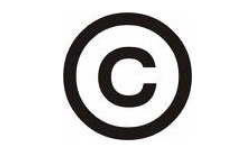In 2011, H. R. 2511, “Innovative Design Protection and Piracy Prevention Act” was an attempt by Congress to extend copyright protection to fashion design. The bill died in Congress and never received a vote. To this day, fashion designs remain unprotected under U.S. copyright law. One fashion-related area that has received considerable attention, however, is in the area of textile designs, which are afforded copyright protection and which appears to be a relatively active area of litigation. In this regard, one author (pay wall) asked whether copyright trolls are taking over the fashion industry.
One such case, Unicolors, Inc. v. H&M Hennes & Mauritz, LP, et al., is being considered for review by the US Supreme Court. Unicolors is a Los Angeles-based fabric designer that created a two-dimensional textile design in January 2011, which it registered with the copyright office as part of a collection of different designs all of which, as required by the copyright office, were purportedly published on the same date thereby making it a valid collective work. At some point subsequent to its copyright registration, Unicolors discovered that H&M Hennes & Mauritz LP (H&M) was selling fashion items using one of Unicolors’ fabric designs without the permission of Unicolors. Here is the design at issue:

Unicolors sued H&M and a jury awarded it $846,720 for willful copyright infringement. Before the verdict, H&M asked the district court to invalidate Unicolors’ copyright registration on grounds that Unicolors sold the patterns separately to different customers at different times meaning that they were not “published” at the same time as required by a valid collection registration. H&M’s motion amounted to a frontal attack on Unicolors’ copyright registration, claiming that Unicolors had defrauded the Copyright Office. The District Court denied H&M’s motion on grounds that H&M had failed to demonstrate that Unicolors had an “intent-to-defraud”. H&M then appealed to the U.S. Court of Appeals for the Ninth Circuit.
The Ninth Circuit reversed the jury verdict on grounds that the district court had erred in requiring H&M to prove that Unicolors had an intent-to-defraud. According to the Ninth Circuit all that was required to invalidate the registration was to demonstrate that Unicolors “knew” — a much lower standard — that it included inaccurate information in its copyright registration application. The Ninth Circuit also concluded that Unicolors’ registration should have been referred to the Copyright Office.
Having the jury award kicked out from under it, Unicolors appealed the Ninth Circuit decision to the United States Supreme Court. In its Writ of Certiorari, Unicolors asserts that the Ninth Circuit erred in requiring a referral to the Copyright Office and that there was insufficient evidence that the group of works was not first offered for sale at the same time. Unicolors also claims that the Ninth Circuit applied the wrong standard for fraud and that Circuit Courts inconsistently apply the fraud standard in their scrutiny of copyright registrations.
So where does this take us? Well, it is unlikely that a Writ of Certiorari will be granted where the petitioner alleges evidentiary errors. Whether the alleged inconsistency among circuit courts over the fraud standard is important enough to occupy a place in the Supreme Court’s crowded docket remains to be seen. One thing for certain, don’t play fast and loose with facts even on those deceptively simple copyright registration applications; it could cost you lots in legal fees.
— Adam G. Garson, Esq.


